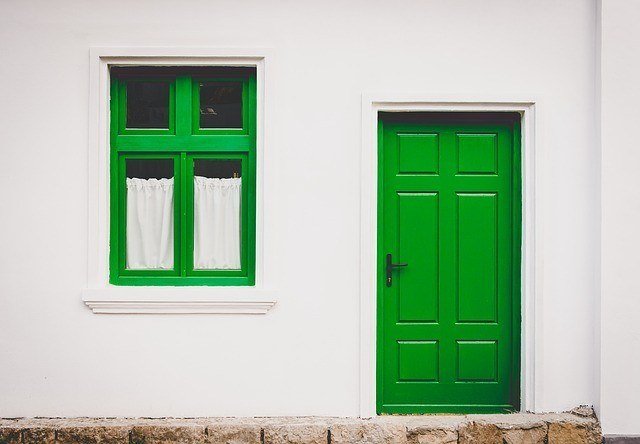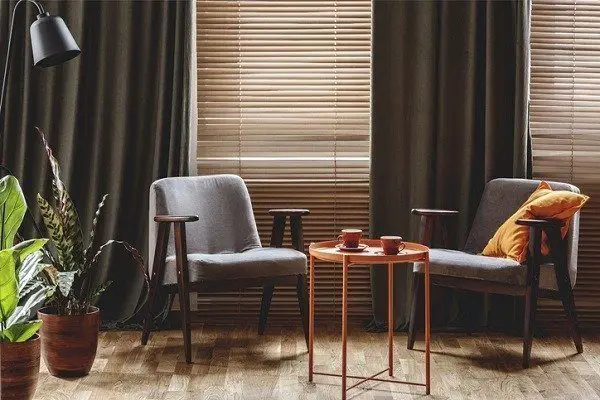If you live in a busy city you will be well aware that the sounds of traffic, construction and people can be relentless regardless of the hour.
If you live in a particularly noisy area it can seriously impact your quality of life, reducing the amount of sleep you get, making it hard to concentrate and shattering your peace.
Windows are often a big culprit when it comes to letting sound in…and not just when they’re open.
Glass is a poor sound insulator so windows are often the weak point in any home, fixing this can make a massive difference.
Soundproofing your windows will ensure that you can sleep well at night, it will also ensure that on those occasions when you throw a loud party you are able to maintain a vaguely amicable relationship with your neighbors afterward!
Types Of Sounds & Methods To Soundproof Your Window Against Them
When planning how you will soundproof your windows it is important to be aware of what type of sound you are seeking to block out.

High pitched sounds are far easier to soundproof against than low pitched sounds such as the rumbling of traffic.
If you need to soundproof your window against a low pitch sound then you will probably need to spend more to achieve the desired results.
As a general rule soundproofing a window can be done by:
- Increasing the size of the cavity between your glass (installing acoustic grade glass will help with this).
- Increasing the density of your window panes.
- Using an insulated frame (or just making sure that your existing frame is thoroughly sealed all the way around)
- Using acoustic sealant and insulation tape.
- Adding Acrylic Panels.
- Using sound deadening curtains and/or blinds.
- Fitting weather stripping.
- Or completely blocking your window!
There are many different methods you can employ to improve your window’s sound resistance some more effective than others and of course the cost of each method will vary significantly.
For the very best results combine as many of these methods as possible.
For example, you could install acoustic glass with a well-sealed insulated frame. Then you could hang a sound-deadening curtain over it and you could also get a sound-blocking panel to fit your window that you could place in the window frame every time it’s about to get noisy!
Our first two methods below will require a reasonable investment and professional installation.
If you don’t want to spend lots of money on new windows or glass don’t worry we have loads of cheap DIY tips below which you can skip to read here.
1. Installing Soundproof Windows

If you have budget to spare then a good option is to invest in triple pane windows, these of course aren’t cheap. However they are very effective in significantly reducing the transmission of sound.
Make sure you buy a triple glazed window with a laminated middle pane. A plastic middle pane will absorb vibrations and deflect sound.
When your new windows are installed that they should be installed precisely and carefully sealed with no cracks or gaps around them as this will completely compromise them.
2. Noise Reduction/Acoustic Grade Glass
Another option if you are considering getting new windows is investing in Noise Reduction Glass (sometimes known as acoustic glass)
This has four thick panes of glass, two either side of the cavity. These are bonded together with a polyvinyl butyral (PVB) interlayer which become clear when heat and pressure are applied to it.
PVB not only helps seal the glass together but it also acts as a noise dampener and absorbs sound energy as it travels through the window.
Acoustic glass is one of the most effective solutions for soundproofing.
Installing a new window can be very expensive and will require professional installation (get a quote here), the same is also true if you replace your glass.
Thankfully there are plenty of things you can do yourself which are effective, easy to do and cheap:
3. Acoustic Sealant
Acoustic foam or sealant should be the first thing you use, locate any gaps in or around your windows and fill them with sealant.
4. Insulation Tape
Soundproofing is all about insulation so insulation tape should be one of the first things you buy for a D.I.Y project.
Make sure you use the thickest insulation tape you can for the best results.
Cover the bottom of your window with the tape as well as the area well where your window and windowsill meet.
5. Use Acrylic Panels

Another option is to add acrylic panels to your windows.
These are a low-cost option which are commonly used on homes which have old fashioned single pane windows in.
Adding acrylic panels is a cheap and effective way of reducing the amount of sound that your single pane windows let through. It will also help reduce sound on a standard double glazed window and will help improve the heat insulation on your window (this is usually the main reason why people install them).
These come with magnetic frames. To install them you simply need to fit the thin metallic frame around your window (which comes with them) and then slot the acrylic frame into place so that the magnetic frame attaches to the metal frame.
They can be easily removed to clean the window if necessary.
Acrylic panels are a cheap and affordable option for adding a bit of extra soundproofing and insulation to your window however they are not going to make a huge difference to how much sound your window lets through so are own useful for dealing with low level noise.
6. Use Heavy Curtains to Deaden Sound
Thick heavy curtains will deaden sounds going through them.

Soundproof curtains are very dense and made of heavy fibres so if you are going to install them make sure you have a very sturdy curtain rail to hang them from which can definitely take the weight.
Soundproof curtains certainly won’t prevent all noise getting through but they will at least muffle noises so are good for low-level noise problems.
They are a valuable sound deadening addition to any of the methods we have previously mentioned.
7. Pair Your Curtains With Soundproof Blinds

The key to soundproofing success is preventing vibrations from getting into your room.
Adding a barrier such as a curtain to your window will help use up the sound energy before it gets to you – this will make a significant difference..
..but there is one thing that is better than a good sound barrier and that is…two sound barriers!
Pairing your curtain with a soundproof blind is a great idea both stylistically (see the picture above – doesn’t that look good?) and acoustically as it creates a second barrier for sound to get through.
The best type of blinds for soundproofing are honeycomb double cell blinds. These are blinds which a comprised of honeycomb-shaped hollow tubing which opens up like an accordion when you pull the blind down.
When the honeycomb cells are opened up they fill with air which helps to soundproof your window because sound vibration can’t travel easily through air.
For the best results we recommend getting a double cell blind – these have two rows of cells back to back for maximimum soundproofing.
8. Use Weatherstripping
Weatherstripping is designed to seal up gaps in leaky external windows and doors, it is used for preventing moisture and wind getting in – when installed correctly it does a brilliant job of this.
The fact that weather stripping can stop wind getting through a window means it is extremely good at preventing airborne sound getting in too.
- 【Multi-function】This indoor weather stripping with strong resilience after extrusion, good for collision avoidance; great for preventing wind, dust, sound, cold, protecting the window and door,...
- 【Package content】2 rolls D type window seal strip, bottom size approx. 0.354 x 0.295 Inch (9 x 7.5 mm), suit for gaps range from 1/5 to 7/25 inch (5 to 7 mm). Each roll tape can be divided into 2...
- 【High quality】This window door seal strip equably foamed by EPDM, same smooth interior and exterior, great elexibility, high resilience, super durable Unique grid adhesive backing- strong grid...
Usually made of felt or rubber weather stripping should be placed inside your open window frame where the window meets the frame when it is closed.
Simply peel off the back and stick it firmly into place, when your window closes against it it will form a far tighter seel with the frame.
This is only an effective solution for older leaky windows, typically made of wood, where the frame may have degraded. If you have a brand new uPVC window it will make minimal difference.
9. Blocking Your Windows
The most effective way of stopping sound from getting through any window or skylight is to block it completely, this can easily be done with dense rubber insulation panels, the same sort which you can use to soundproof your walls or you could use a fibreglass soundproof blanket.
To do this simply buy a barrier panel, and cut it to fit the exact size of your window frame, this can be removed and replaced as and when you need your window to be soundproof.
Obviously completely blocking your window is not always desirable.
If you want to be able to enjoy the experience of having both noise (or lack thereof) and light at the same time in your room then there are plenty of other options available as we have mentioned above.
10. Fit Window Film
Window soundproofing film is a plastic film that features an internal layer, sandwiched between 2 layers to help dampen noise coming through your window. While it won’t completely stop noise coming through it can help dull background noises.
A Summary Of Window Soundproofing
We hope that you found this guide useful and that it has given you a good idea of where to start and what to do to make the noise outside your window less of a problem.
As an Amazon Associate I may earn a small fee from qualifying purchases at no extra cost to you. This helps us run the site, so thanks for your support!

Thank you from the other side of the pond!
Summer will be so much cooler!
Glad you find our article useful Heather, thanks for visiting us!